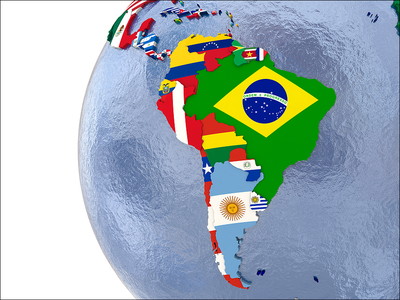 The Copa America is the championship for national teams from South America. The organiser of the tournament is the South American Football Confederation, the Confederación Sudamericana de Fútbol, or CONMEBOL for short.
The Copa America is the championship for national teams from South America. The organiser of the tournament is the South American Football Confederation, the Confederación Sudamericana de Fútbol, or CONMEBOL for short.
Along with the ten South American teams in CONMEBOL, there are also usually two invited teams from outside the continent. The most frequent invitee is Mexico who have played in ten tournaments.
The first edition was held in 1916, making the oldest international championship still running today. It predates the European Championship by 44 years and the World Cup by 14 years. In the past the event has been held annually, biennially, triennially and quadrennially. From 2020 (held in 2021) this will take place every four years in the same year as the Euros and between World Cups.
Argentina and Uruguay have won the most tournaments with 15 titles, ahead of Brazil with 9.
List of Copa America Winners By Year
| Year | Winner | Score | Runner Up |
|---|---|---|---|
| 2021 | Argentina | 1–0 | Brazil |
| 2019 | Brazil | 3–1 | Peru |
| 2016 | Chile | 0–0 | Argentina |
| 2015 | Chile | 0–0 | Argentina |
| 2011 | Uruguay | 3–0 | Paraguay |
| 2007 | Brazil | 3–0 | Argentina |
| 2004 | Brazil | 2–2 | Argentina |
| 2001 | Colombia | 1–0 | Mexico |
| 1999 | Brazil | 3–0 | Uruguay |
| 1997 | Brazil | 3–1 | Bolivia |
| 1995 | Uruguay | 1–1 | Brazil |
| 1993 | Argentina | 2–1 | Mexico |
Tournament Format
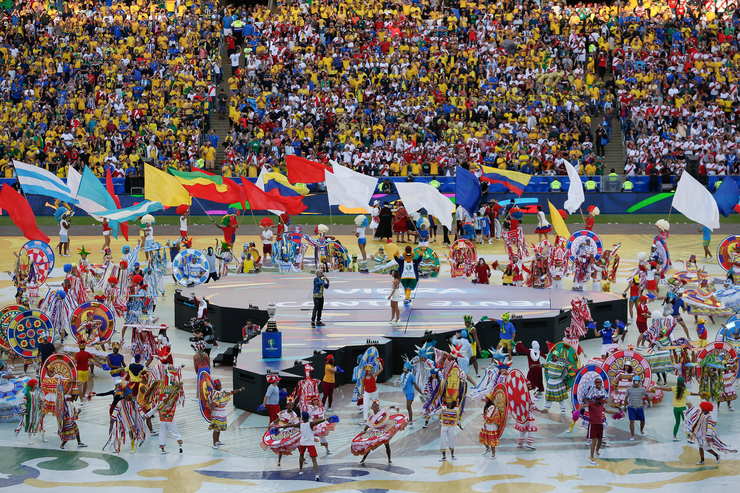
What was once known as the South American Football Championships now goes by the far more familiar name of the Copa America. Although a competition designed for teams within the South American continent (specifically those belonging to CONMEBOL) it differs from many other continental tournaments in that nations from further afield regularly participate. It always remains a predominately South American affair though and much like club football within the continent, passions can run extremely high during this always-enthralling competition.
To find out how a team goes about collecting this prestigious prize, let us look into the structure of the Copa America itself.
Qualification
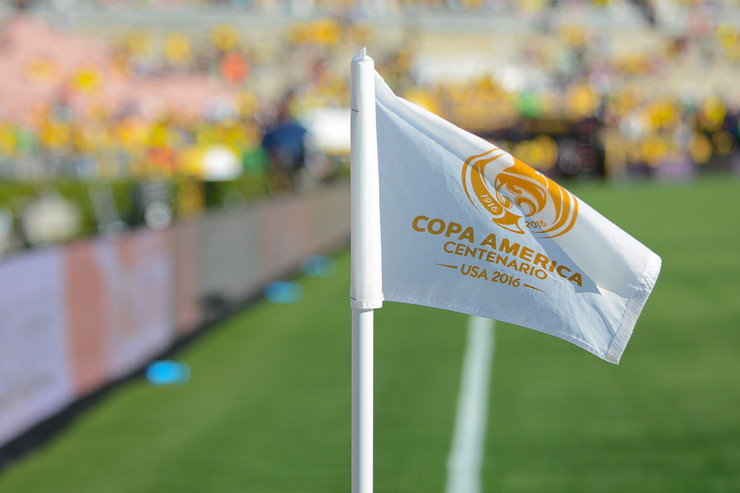
The lack of CONMEBOL teams means there is no need for any qualification rounds prior to a Copa America tournament. Although countries such as Guyana and Suriname would ordinarily be considered South American, and possibly Panama too, all these are part of CONCACAF. This means that CONMEBOL consists of just 10 teams, making it the smallest FIFA confederation on the planet, even smaller than the OFC in terms of the number of members. All ten CONMEBOL teams feature in every Copa America as standard, and regularly they are joined by two from further afield, but possibly as many as six.
For the ‘special guests’ so to speak, there is no qualification process in place for them either; instead, other nations are simply invited to take part. These welcomed nations are typically ones that are both geographically and culturally close to South America, with Mexico and Costa Rica the two guest teams with the most appearances. That said, the United States are usually the first to be invited but rarely can they fit it into their schedule.
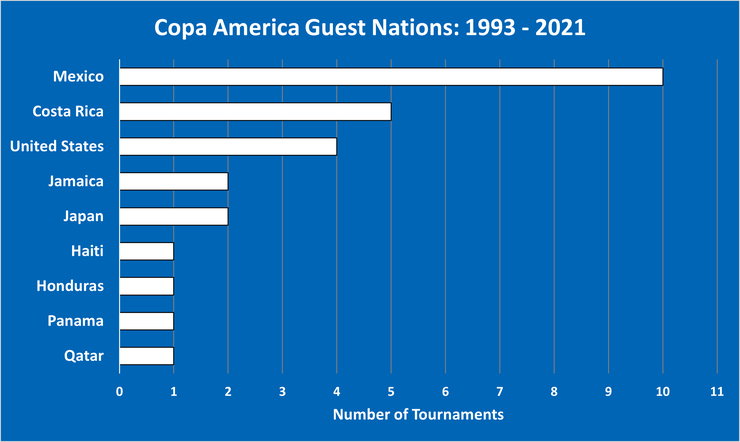
While the USA arguably seem less fitting of an invite, the CONMEBOL can ultimately do as they please as they are the ones making the rules. For the 2019 edition of the tournament they invited both Japan and Qatar to take part. World Cup 2022 hosts Qatar were offered another place in the following tournament too, along with Australia, but both had to withdraw as they had World Cup qualification matches to play.
Group Stage
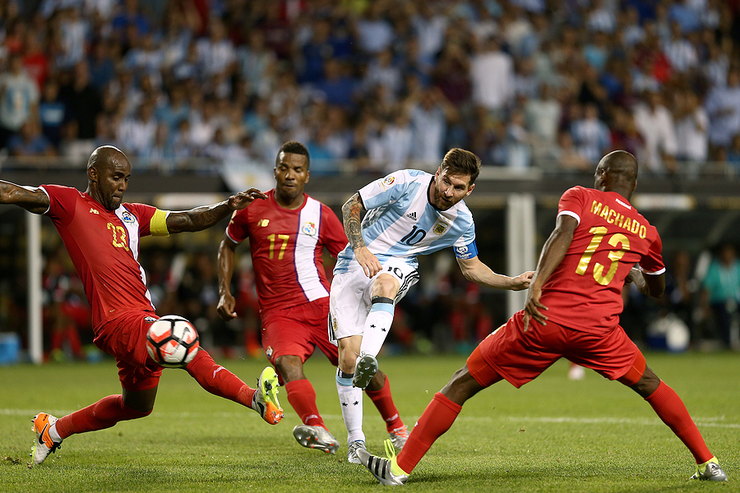
The 16-team special edition tournament in 2016 saw the Copa America (or Copa America Centenario as it was known) feature four groups of four teams but this is not the standard format for this tournament. Most often the competition features 12 teams which are divided into three groups of four. Prior to the draw teams are assigned a pot according to their FIFA Ranking. The highest-ranked teams go into Pot 1, the next highest into Pot 2 and so on. The only exception is the host nation who automatically take a spot in Pot 1 regardless of their ranking. If the two guest teams end up in different pots, then the draw will be arranged so they cannot end up in the same group. Otherwise, all combinations between pots are possible.
In the group stages, teams play each other once, meaning they all face an absolute minimum of three fixtures. The top two teams automatically qualify for the knockout stages and they are joined by the two best third-placed sides. To determine the ranking of the three third-place teams, group stage points are first looked at, followed by goal difference. Should this fail to separate them then goals scored will become the tiebreaker and failing that tied team(s) will be drawn by lots.
The tiebreakers for determining final positions within the groups themselves are more extensive than this. There are seven criteria that can be applied (in order) before it would become necessary to pull a name out of a bag.
- Points obtained
- Goal difference
- Goals scored
- Head-to-head result
- Head-to-head goal difference
- Head-to-head goals scored
- Fair Play Points
Knockout Stages
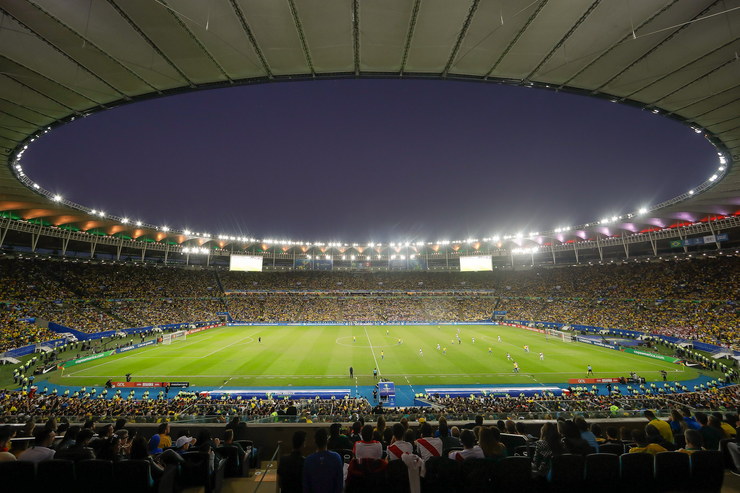
The knockout stages begin at the quarter-finals stage given there are eight teams remaining by this point in the competition. From here all matches are played over one leg and there are no replays. Should any scoreline be level after 90 minutes, a 30 minutes of extra time will follow. If the scores remain tied after this then a penalty shootout will be called upon to quickly produce a winner.
Losing quarter-finalists exit the competition and have no more matches to play. Losing semi-finalists however participate in a third place play-off which is usually scheduled a day before the final. With the final itself being the last match, there is always a climactic ending to any Copa America, which is usually takes place just over three weeks after the tournament commenced.
Ten and Sixteen Team Tournaments
We have focussed on the much more standard 12-nation Copa Americas but how does it work when there are 10 or 16 teams involved? For the latter, the structure needs very little changing as there are four groups of four rather than three groups of four. With this, only a top two finish is good enough to progress to the quarter-finals, only managing third will teams on the next flight home. A 10-team system, used in 2021 as Australia and Qatar withdrew with insufficient time to find a replacement, is trickier as not divisible by four.
Instead, CONMEBOL creates two groups of five with the top four finishers progressing to the quarter-finals. The country that finishes top of Group A plays fourth in Group B (and vice versa) and so on, so there is an incentive not just to do the bare minimum.
Previous Formats

The modern 12-nation tournament, which sees three groups of four followed by an eight-team knockout, was first introduced at the 1993 Copa America. Prior to this there were no invited nations from other continents so only 10 teams featured, but not in the same format as used in 2021. In 1991 for instance, from the two groups of five, only the top two countries from each group entered the ‘final round’ which was another league format consisting of four teams. Only after all four of these sides had played one another did we have our winner. It is also worth noting that back in these times, teams were only issued two points for a win rather than the now-universally standard three.
This was also the approach in 1989 but in earlier 10-team tournaments the Copa America feature three groups of three teams. The winners from each would enter the semi-finals, joined by the defending champions who received a bye to the penultimate stage. This was an incredibly generous gift as it meant the nation that lifted the cup previously only had to win two matches to successfully defend their crown. It may seem a quite crazy system to use now but this was precisely the one used in 1975, 1979, 1983 and 1987. The only team to truly benefit from it though were Uruguay who successfully held onto their title in 1987 despite only scoring two goals.
Further back than this and the tournament was not even known as the Copa America.
South American Football Championship
Before 1975, this tournament was known as the rather less catchy South American Football Championship. It was far from the most consistent of tournaments though as you could virtually guarantee that at least one CONMEBOL nation would withdraw from any given tournament. This did not have any real impact on the event’s structure though as it tended to operate as a league format regardless of the precise number of teams involved. The team that topped the table once all the fixtures were played were crowned champions, so there were no knockout stages or secondary rounds.
Having a league system that could shrink and grow as needed was the best option available for a tournament with such regularly changing entries and late withdrawals. Between 1923 and 1963, at least one team pulled out from the tournament, making it impossible to have a completely consistent format. Many editions during this period only ended up seeing five or six teams involved despite there being eight to 10 CONMEBOL members (Colombia were the ninth nation to join in 1936 and Venezuela the 10th in 1953). Even when eight featured in 1947 and 1949, the league format was still preferred although in the latter, the top two teams (Brazil and Paraguay) ended up playing a play-off to determine the overall winner as they were tied on points.
Specific Awards
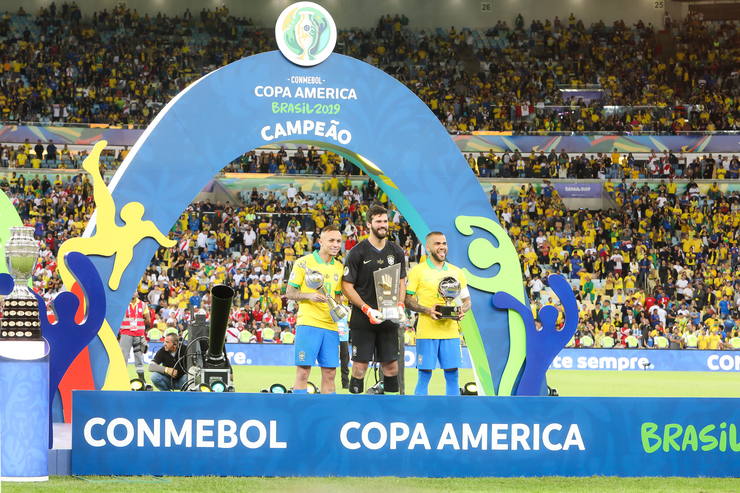
There is a small number of individual awards dished out at the conclusion of any given Copa America although with some appearing regularly and others coming and going. One award that has been something of a mainstay of the competition is a most valuable player, also known as player of the tournament. Basically, this award goes to the player deemed to have performed the best over the course of the entire competition. Most of the time a player is naturally happy to accept this individual prize but in 2015 Lionel Messi rejected the accolade. This was very much a first for the competition but as Argentina had just lost the final despite being the considerable favourites, he was understandably not in the best mood.
Another regular award to feature is the ‘Golden Boot’ (top scorer). Unlike in other competitions that will use tie breakers (for example assists or fewest minutes played) to decide a winner, the Copa America has long been happy for players to share top spot. This has happened frequently too and in the case of the 1927 tournament, five players finished as joint top of the scoring charts on three goals. In 2021, plans were announced to change the name of this award to the Sergio Kun Aguero Award, honouring the Man City and Argentina striker who was forced into a slightly premature retirement due to a heart condition.
Other awards are not as consistent but there is usually something to credit a keeper such as a ‘Golden Glove’ (most clean sheets) or instead the (more subjective) ‘Goalkeeper of the Tournament’ award. You may also find that a promising star is highlighted for special attention with the ‘Best Young Player’ prize named although this has been missing from more recent tournament editions. Finally, you have the Fair Play Trophy and this goes to a team rather than an individual. Unlike what you might expect, this is not simply awarded based on the fewest yellow/red cars received (either total or per game), instead a range of factors are taken into consideration.
Tournament History & Records

The first-ever Copa America, or South American Football Championship as it was known back then took place in 1916. There was an earlier international tournament on the continent featuring Argentina, Chile and Uruguay but CONMEBOL does not give this official status and subsequently, it does not count as part of Copa America history. These three teams plus Brazil, did take part in the first-ever recognised edition of the tournament though with Uruguay proving victorious, just as they were later on during the first-ever FIFA World Cup in 1930.
This four-team tournament was not technically organised by CONMEBOL as the federation did not exist at this point. It was the event that sparked the creation of the organisation though, spurred on by an enthusiastic board member of the Uruguayan Football Association. Things moved so quickly at this stage that CONMEBOL was created on 9th July 1916, mid-way through the inaugural Copa America. In the early years, the tournament featured every summer although they were forced to abandon 1918 edition due to a flu outbreak in Rio de Janeiro.
In 1921, the tournament welcomed its first new team, Paraguay, who affiliated with CONMEBOL earlier in the year. This did not immediately increase the number of participating teams though as Chile pulled out of the year Paraguay made their debut. The five CONMEBOL members did however all meet the following year in Brazil for the 1922 tournament. A closely run competition saw three teams end up joint-top on five points and this was long before the days of tie-breakers. The tricky prospect of having a three-way play-off never required a solution though as Uruguay had to fly home, leaving just Brazil and Paraguay to battle it out.
Things generally ran smoothly throughout the 1920s but by 1930 problems, linked to the creation of the first World Cup, began to emerge. There was a large degree of animosity between the Uruguayan and Argentinian football federations and this meant that the 1930s only saw three Copa America, six fewer than the previous decade. The situation with the tournament did not improve a great deal heading into the next decade either with several editions initially deemed unofficial, only for CONMEBOL to later reverse the decision.
The organisation of the tournament had basically collapsed and even increasing the gap between tournaments did not help. After the 1947 edition, it was decided to have a tournament every two years, but then the gap increased to four, before moving back to two then one. During one rather bizarre year, 1959, there were two separate tournaments held just nine months apart, the first in Argentina and the second in Ecuador. This huge degree of inconsistency and confusion made sure teams lost a good deal of interest in the competition. The impact was that teams would quite regularly skip the opportunity to play and for those that did take part, they sometimes did not even bother sending a full-strength side.
With the competition really struggling when it appeared in 1967, there was an eight-year absence before it returned, this time renamed the Copa America. Between 1987 and 2001 it was scheduled every two years with the 10 members of the confederation taking turns to host. This, combined with a change of format and greater television coverage (stretching to North America and Europe) successfully revived the contest. For a short period between 2001 and 2007, the tournament became less regular, featuring every three years rather than two and this was increased to four years which is largely the standard now. This has not stopped there from being a couple of special extra additions though such as in 2016, a commemorative version to celebrate its 100th birthday. This special version of the tournament was the first Copa America to take place outside of South America, with the USA taking up the job as hosts, and also the first to feature 16 teams.
Most Successful Teams
You might think that it would be Brazil at the top of the Copa America leaderboard given their talent for producing fine players over the years but this is not the case. Instead, Uruguay find themselves tied in top spot with Argentina. Overall, eight teams have lifted the Copa America trophy, all of them being CONMEBOL members. The only two members currently without a win (as of 2021) are Ecuador and Venezuela. None of the invited guests has won the competition either although Mexico have managed to finish as runners-up twice so perhaps this could change in the near future.
Copa America Winning Teams: 1916 – 2021
| Team | Wins | Year Title | Tournaments |
| Argentina | 15 | 2021 | 43 |
| Uruguay | 15 | 2011 | 45 |
| Brazil | 9 | 2019 | 37 |
| Chile | 2 | 2016 | 40 |
| Paraguay | 2 | 1979 | 38 |
| Peru | 2 | 1975 | 33 |
| Colombia | 1 | 2001 | 23 |
| Bolivia | 1 | 1963 | 28 |
As of 2021, there had been 47 Copa America tournaments and of these 22 had been won by the host team. This includes both Bolivia’s and Colombia’s sole triumph, showing just how much of a boost playing on home soil can provide even within an intercontinental tournament.
Top Scorers
There is a real mix of nations on the all-time Copa Americas top scorers list, despite actual victories being far more unevenly shared out. What is initially quite surprising is that there are two Peruvians within the top five given that they have only won the competition twice. Due to a lack of other international matches, 15 of Lolo Fernandez’s 22 goals scored for Peru, over a 13 year period, came in the Copa America. You may raise your eyebrows that Lionel Messi doesn’t top this list but the Argentine wizard is tied with six other players, including fellow countryman Gabriel Batistuta, on 13 goals.
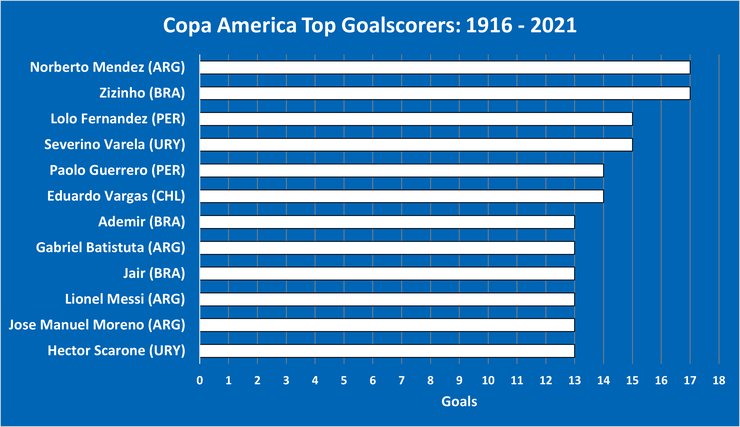
Messi does, however, hold a joint record, alongside Chile’s Sergio Livingstone as the player with the most Copa America appearances. Across six tournaments the pair have featured 34 times, one more than Brazil’s Zizinho could manage. For many other Copa America records, Messi is solely responsible for them such as the most assists (17), the most free kicks scored (4), the most man of the match awards (14) and he is also the only player boasting double-digit goals and assists.
Other Facts And Figures
While the holder of many Copa America records, the Barcelona legend is not the only name you will find in the history books of this tournament.
- Most Copa America Wins (Player) – Angel Romano helped Uruguay lift the Copa America 6 times
- Fastest Goal – Kily Gonzalez of Argentina who scored against Uruguay after just 68 seconds
- Fastest Hat-trick – Jose Manuel Moreno needed just 10 minutes to score three goals in 1942
- Most Goals Scored in One Tournament (Player) – Jair (Brazil, 1949), Humberto Maschio (Argentina, 1957), Javier Ambrois (Uruguay, 1957) all tied on 9
- Most Goals Scored in One Tournament (Team) – Brazil fired in a whopping 46 goals in 1949
- Fewest Goals Conceded in One Tournament – Colombia did not concede a single goal when winning the 2001 Copa America